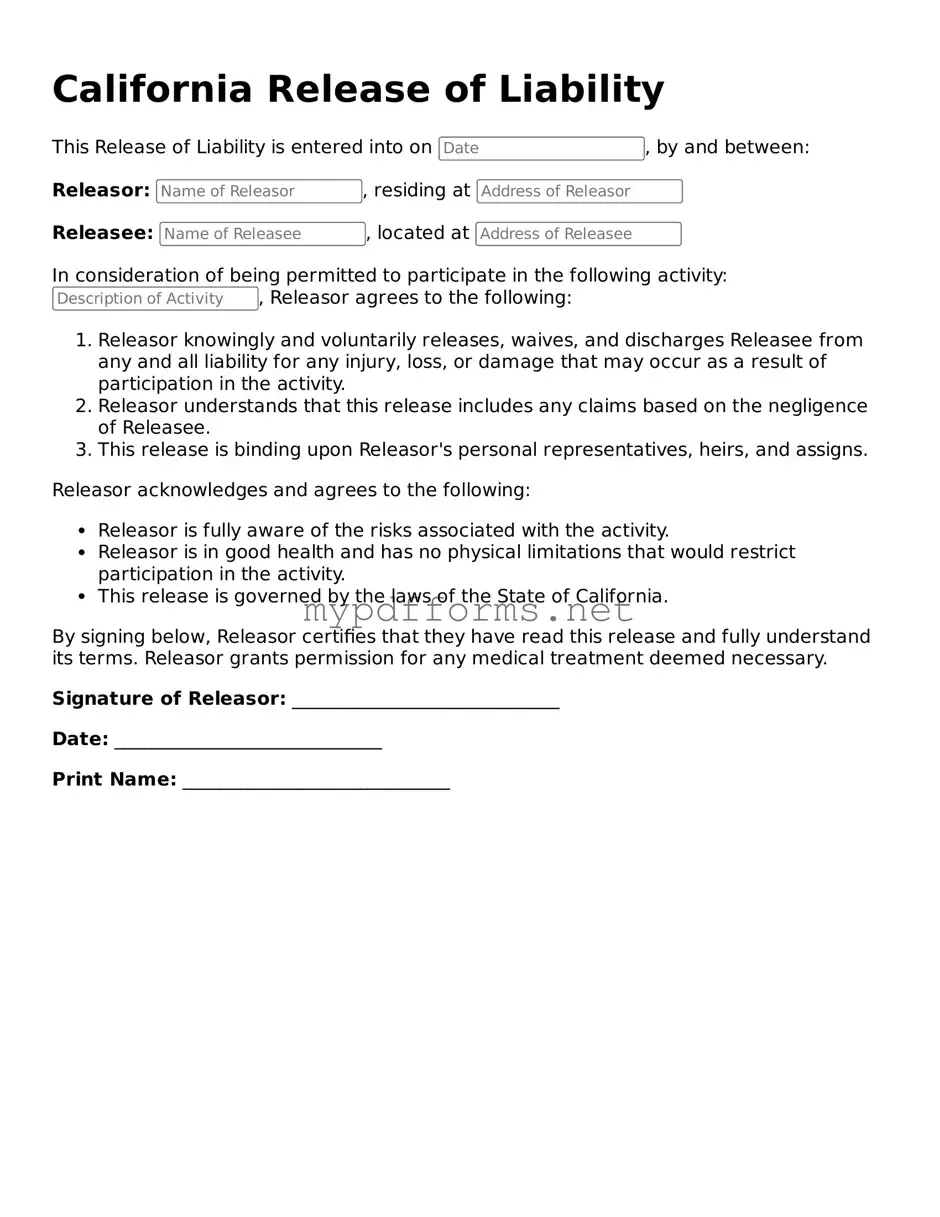Attorney-Verified Release of Liability Document for California
The California Release of Liability form is a legal document that protects individuals and organizations from being held responsible for injuries or damages that may occur during an activity. By signing this form, participants acknowledge the risks involved and agree not to hold the organizers liable. If you're considering an event or activity, it's important to understand the implications of this form. To get started, fill out the form by clicking the button below.
Modify Document Here
